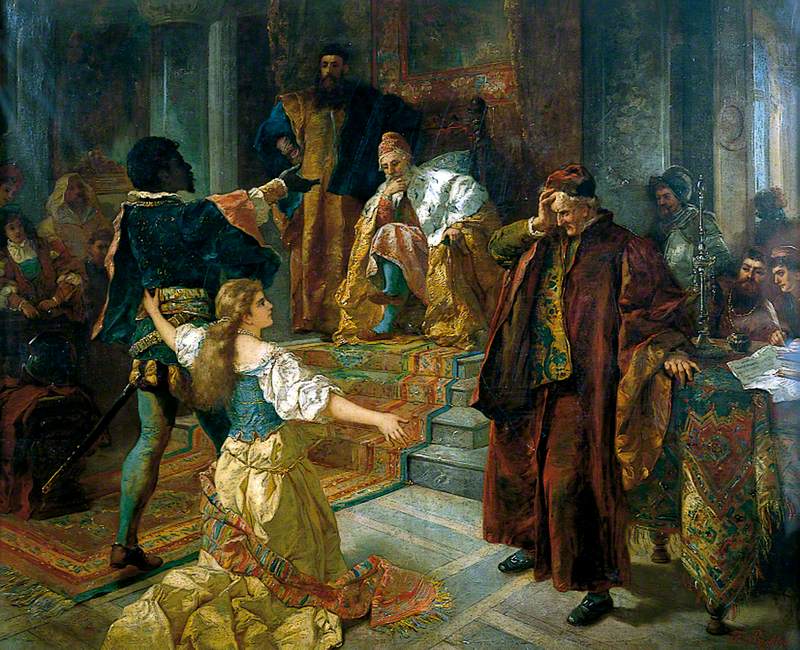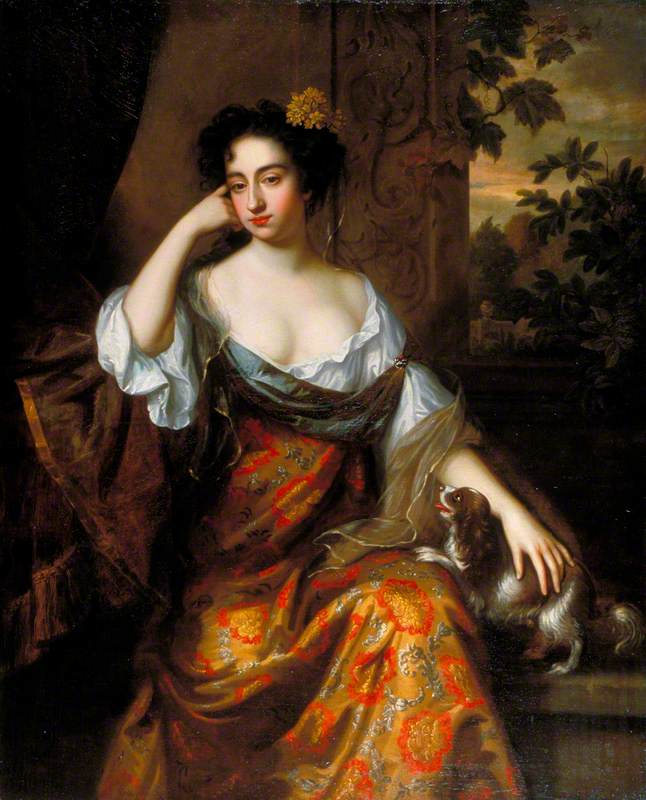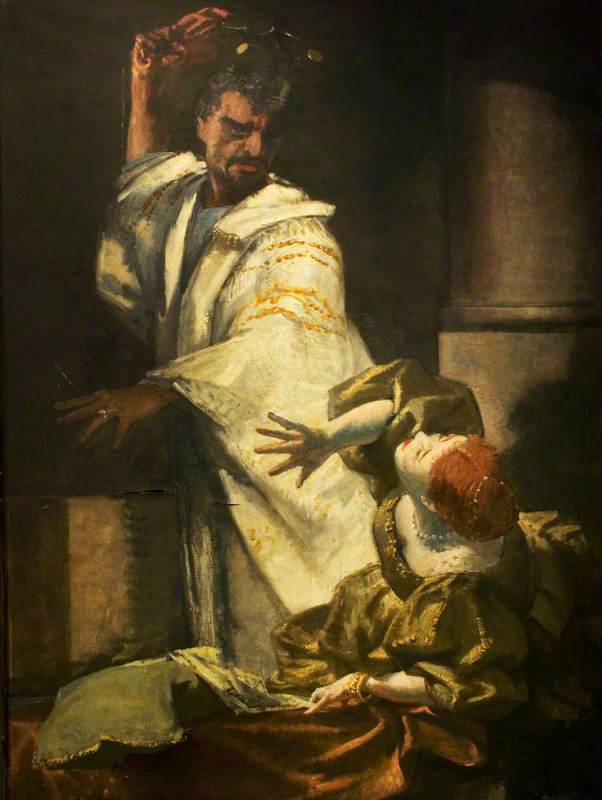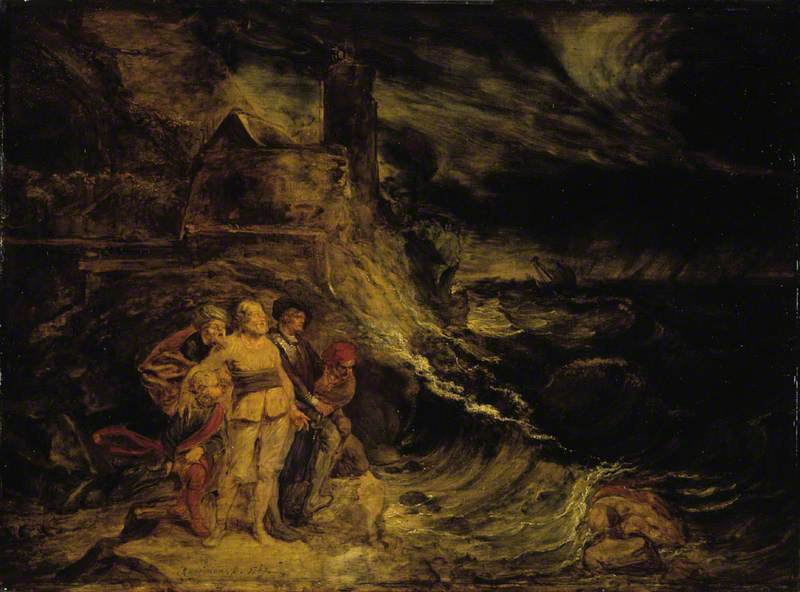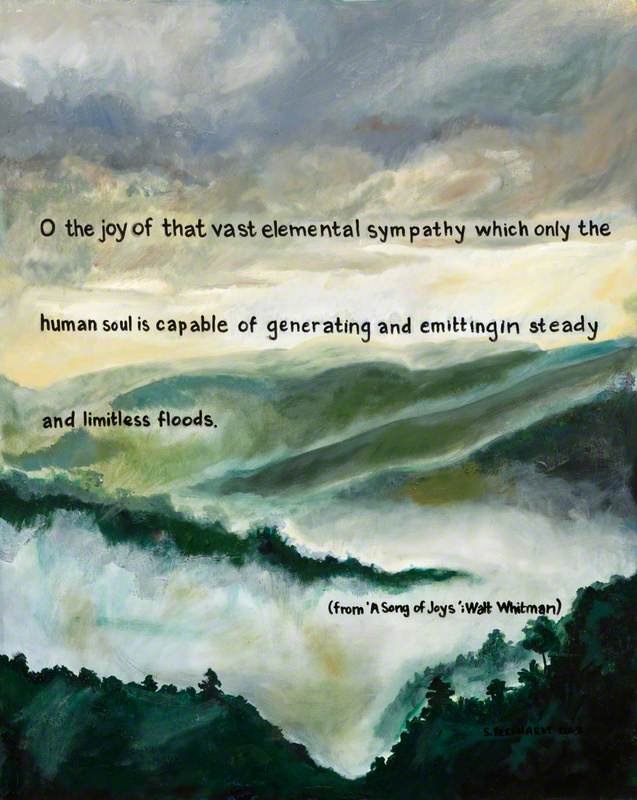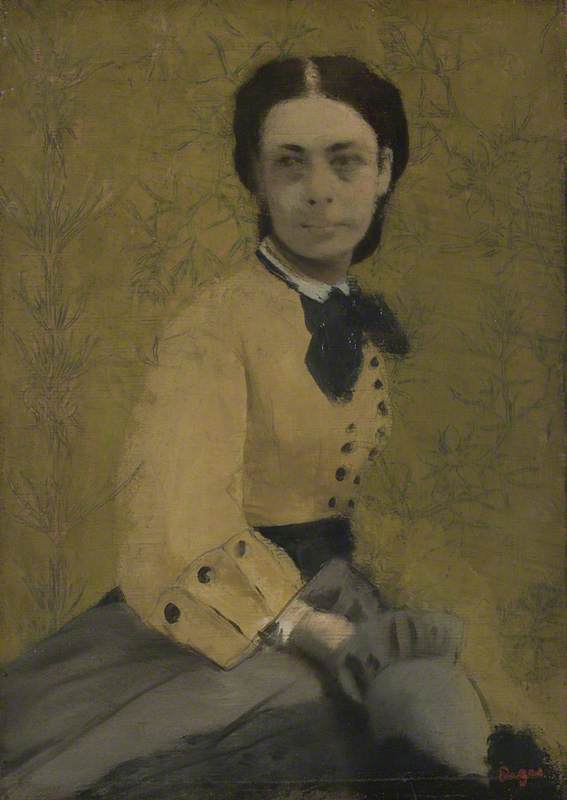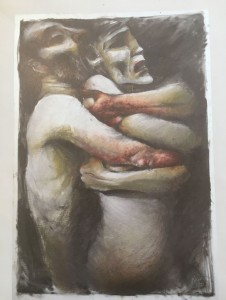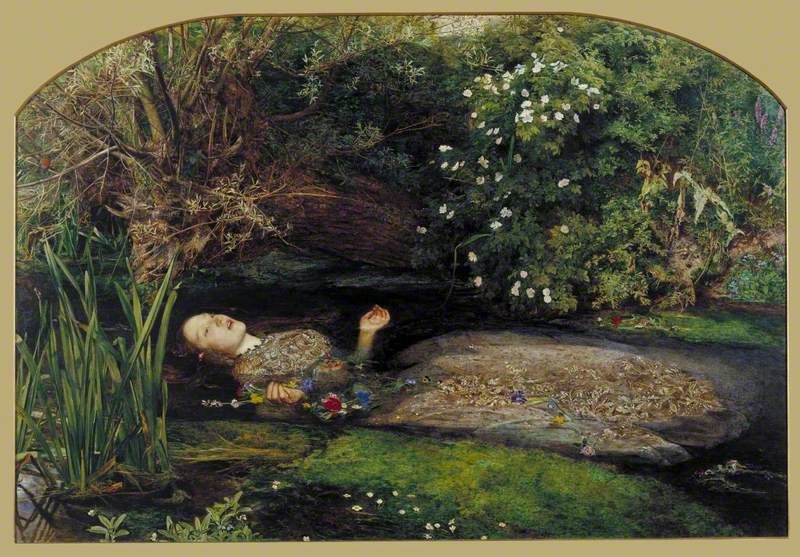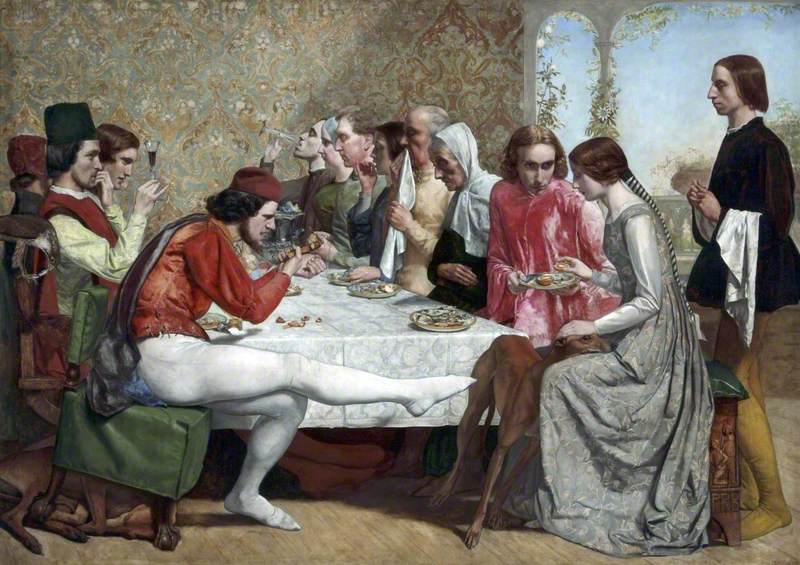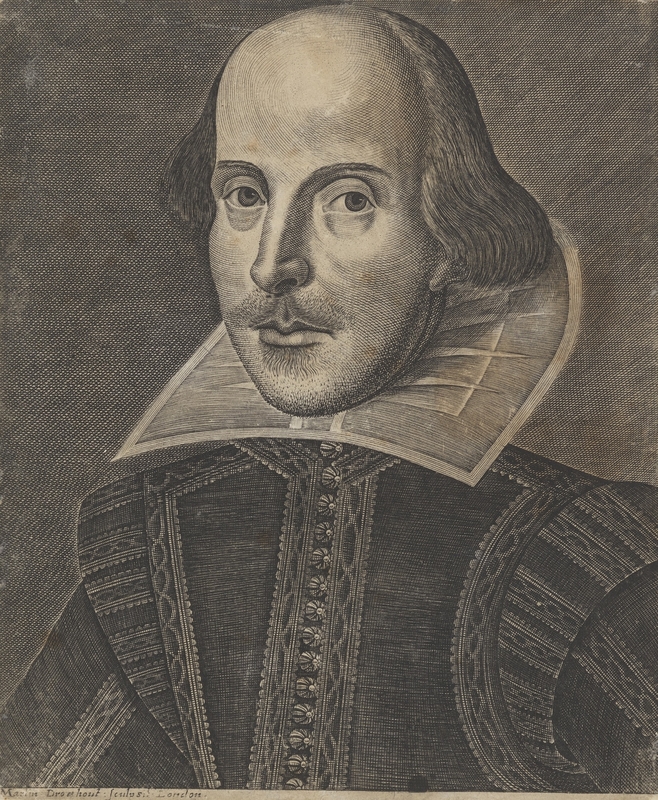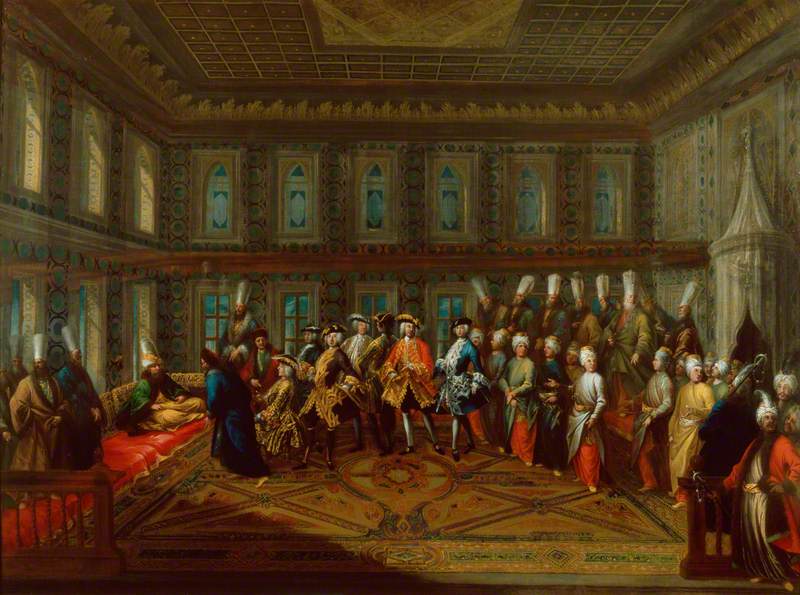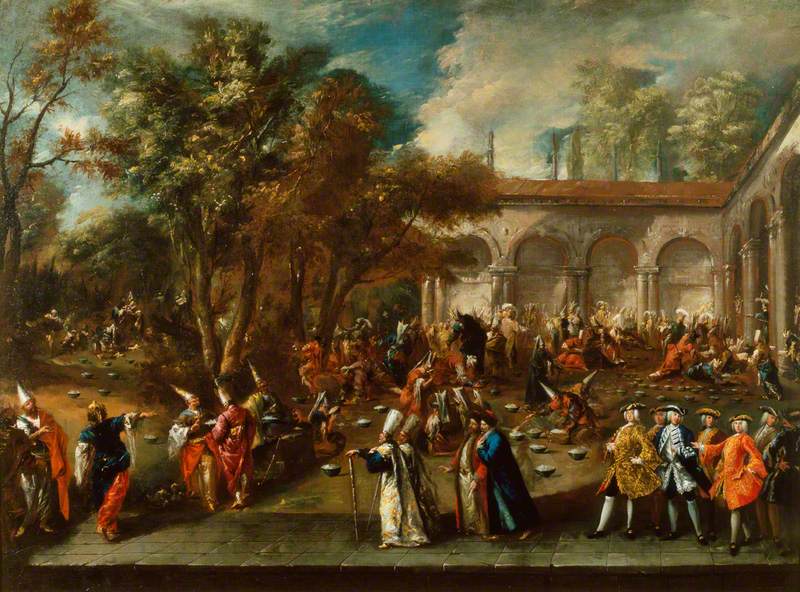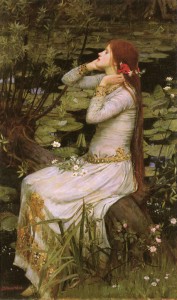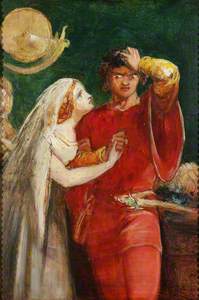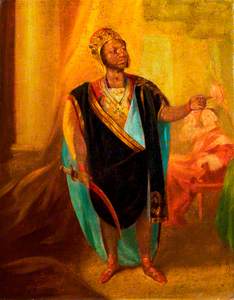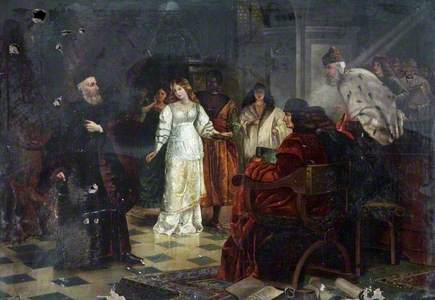Othello is one of four major Shakespearean tragedies, alongside Hamlet, Macbeth and King Lear.
These plays are all well represented in the nation's art collection, particularly Macbeth – its wild Scottish landscapes, mystical witches and dramatic bloodshed have all proved to be a powerful inspiration for artists.
Perhaps Othello is the least known of these four plays. It has fewer instantly recognisable speeches or events – no 'to be or not to be' moment – and doesn't tend to be staged as often. Yet if you've ever used the phrase 'green-eyed monster' when talking about jealousy, described someone as 'wearing their heart on their sleeve' or talked about a 'foregone conclusion', you've been quoting Othello.
Othello Relating His Adventures
(copy after Douglas Cowper) 1879
John Emery (1802–1893) 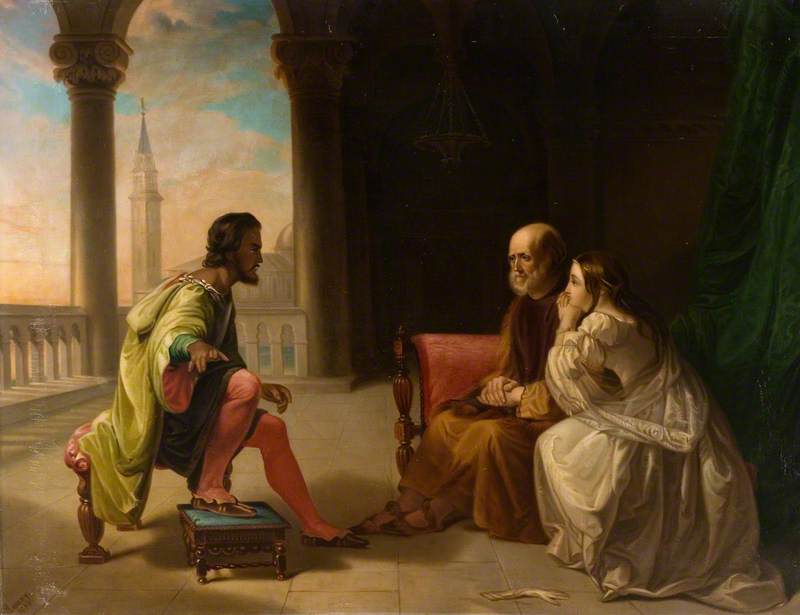
It's a fascinating play, focusing on jealousy and deception, and is captured on Art UK through vivid paintings of its most dramatic moments, and the actors who have taken on the title role.
A play of firsts
Othello was first staged in 1604. Unlike many of Shakespeare's plays, we know this with some confidence because there is a written record of the performance. It took place on 1st November of that year, and the role of Othello was played by William Burbage.
The (probable) first woman to appear professionally on the public stage was thanks to Othello – in 1660, Margaret Hughes played Desdemona.
Samuel Pepys wrote in his diary of that year:
'Here, in the Park, we met with Mr. Salisbury, who took Mr. Creed and me to the Cockpitt to see "The Moore of Venice," which was well done. Burt acted the Moore; by the same token, a very pretty lady that sat by me, called out, to see Desdemona smothered.'
The play saw the first non-white actor play Othello on a British stage. Ira Aldridge was an American actor but came to the UK when he was unable to get work due to discrimination in his home country.
Ira Aldridge (1807–1867), as Othello in 'Othello' by William Shakespeare
c.1848
British School 
While Aldridge's portrayal of Othello was an important moment, it was not smooth sailing. He'd arrived in Britain in 1824, and became a hit with audiences. But the first time he played Othello, in Covent Garden, the play was cancelled after just two performances. The audience liked him and received him well – but he was monstered in the press, who objected to seeing a black actor performing with a white woman.
Aldridge was able to make a living outside London, acting on tour around the country, to popular reception – particularly in Coventry, where he was made a theatre manager.
Othello and Desdemona
Othello's wife Desdemona, like many of the women written by Shakespeare, is hard done by. At the beginning of the play, she rebels against her father's wishes and marries Othello. Her new husband rewards her act of love by falling prey to Iago's manipulations, accusing her of adultery and ultimately killing her.
Desdemona's character is a bit of a mixed bag. Throughout the play, she is subservient to her husband, yet she has her moments of passion. Ultimately, she remains faithful to Othello, who is the one foolish enough to be led astray by Iago, and is honest throughout the play – which is more than can be said for any of the other characters.
Desdemona's fate – even by the standards of Shakespeare's female characters – seems particularly cruel. Perhaps because there was no real reason that she and Othello could not have lived a long and happy life together. Which brings us neatly on to...
Iago
Really, the play should be called 'Othello and Iago'. Iago is ever-present, steering Othello on a course of ruin, whispering in his ear like a bad conscience. Iago has one of the biggest roles in all of Shakespeare's plays, second only in dialogue to Hamlet (Othello himself has the fourth-biggest role, after Henry V).
For such a prolific character, there are few representations of Iago on Art UK. There is only one solo portrait, of the great Shakespearean actor John Henderson in the role, looking suitably shifty.
John Henderson (1747–1785), as Iago in 'Othello' by William Shakespeare
1786
Gilbert Stuart (1755–1828) (attributed to) 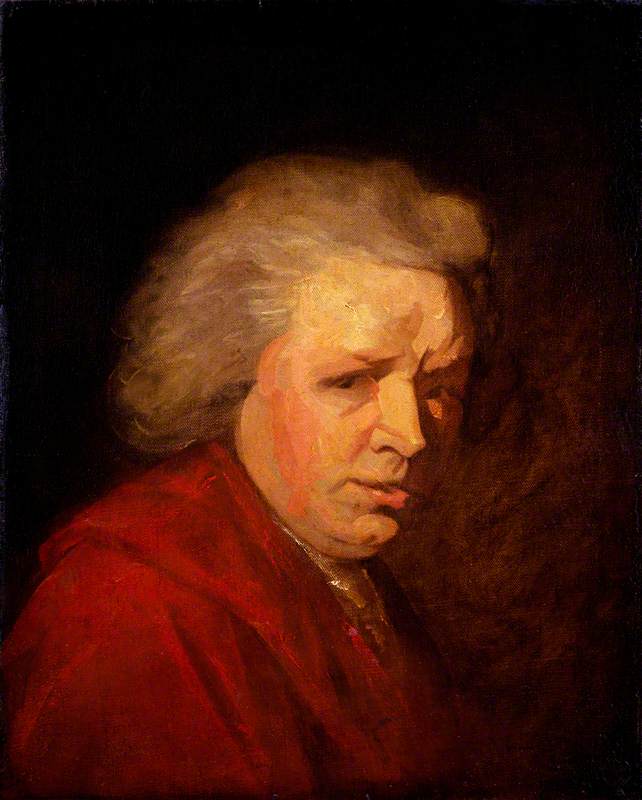
However, we can find Iago in other places. This particular scene, from near the beginning of the play, should be a happy one: a storm has destroyed the Turkish fleet so the war is over, and Othello has been reunited with Desdemona.
'Othello', Act II, Scene 1, the Return of Othello
(from the Boydell series)
Thomas Stothard (1755–1834) 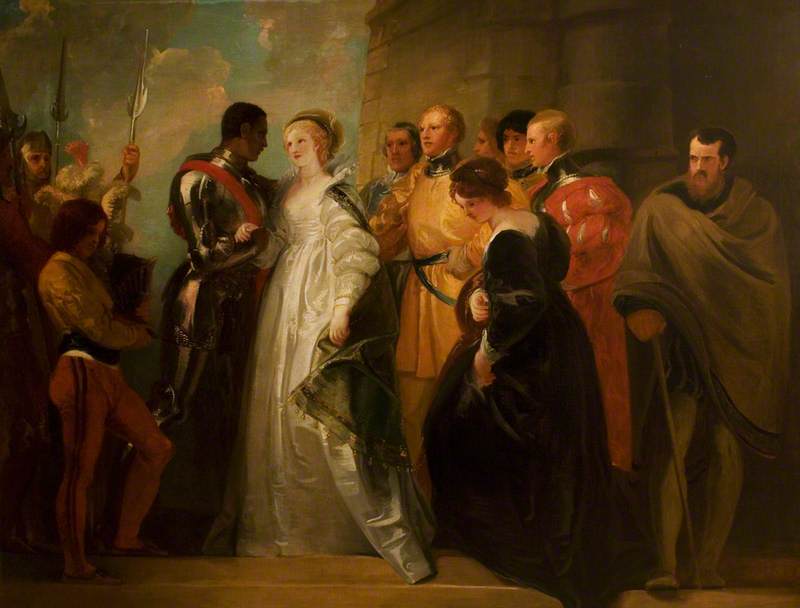
They are surrounded by friends. Yet on the far right of the painting is Iago, looking on jealously. Perhaps this is the point at which he begins plotting, saying as an aside to the audience:
Oh, you are well tuned now,
But I'll set down the pegs that make this music,
As honest as I am.
Famous faces
Alongside Ira Aldridge, a celebrity of his time, Art UK boasts portraits of famous actors who have taken on the role of Othello.
The first is the magnificently named Herbert Beerbohm Tree, and shows us that, even after Aldridge, the practice of white actors applying 'blackface' for the role was still commonplace (and would be for another 50 years or so after Beerbohm Tree's time).
Herbert Beerbohm Tree (1852–1917), as Othello in 'Othello' by William Shakespeare
1914
Charles A. Buchel (1872–1950) 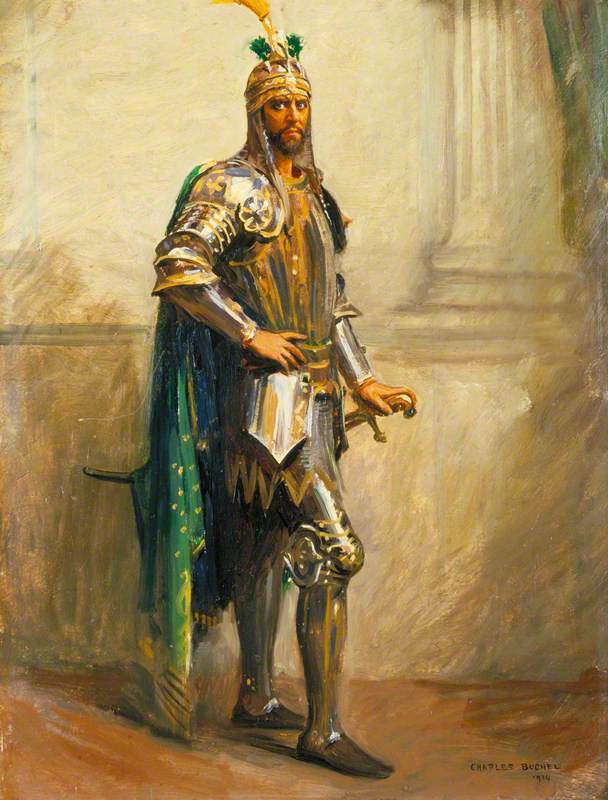
Beerbohm Tree was a prolific actor and the founder of the Royal Academy of Dramatic Arts. He also directed an infamous 1911 production of A Midsummer Night's Dream, where he included live rabbits on the stage. They were present throughout the play, following trails of bran left for them to keep them in order, and were much loved by audiences. They helped Beerbohm Tree to prove the popular appeal of a Shakespeare play at a time when this wasn't a given.
Ben Kingsley (b.1943), as 'The Moor'
(from 'Othello') 1986
Dominique Benjamin (b.1957) 
More recently, we have this portrait of Sir Ben Kingsley, who played Othello in 1986 for the Royal Shakespeare Company, with David Suchet as Iago. The New York Times said of his grand stage entrance: 'It seems safe to predict, though, that Kingsley will never make a more striking first entrance than he does as Othello. Out of the darkness at the back of the deep Barbican stage, across a black floor, beside black walls, past citizens dressed in black, he slowly and sedately advances, a slight yet lordly figure in glistening white robes and headdress.'
Molly Tresadern, Art UK Content Creator and Marketer
